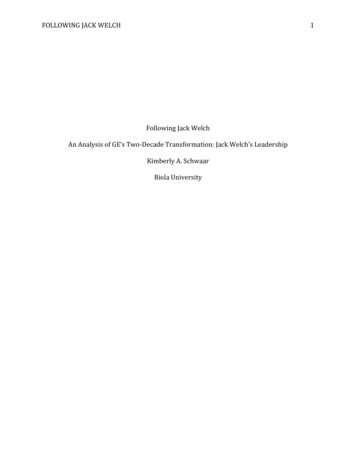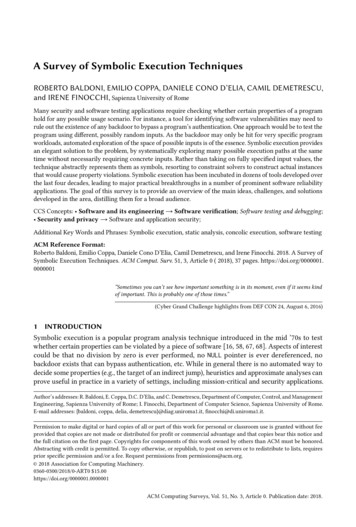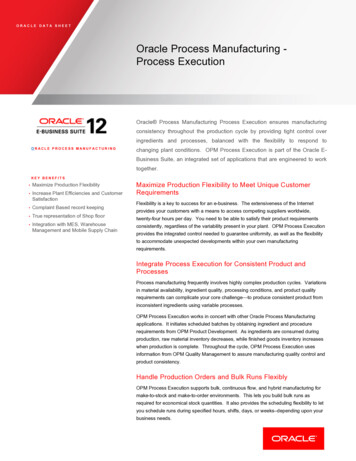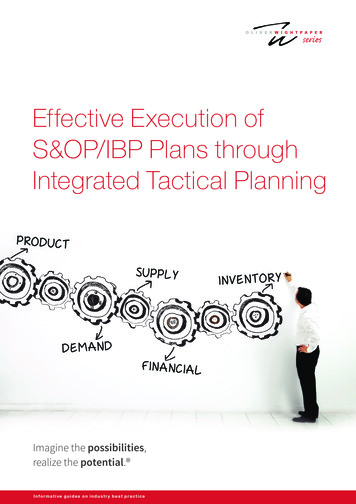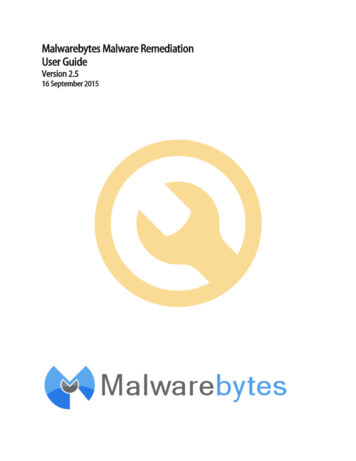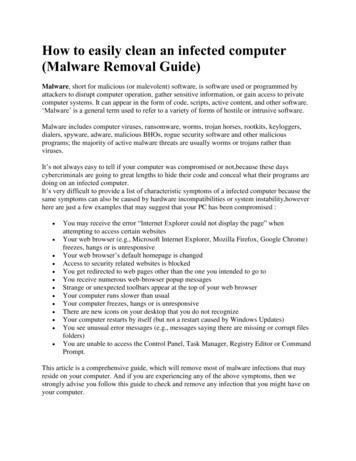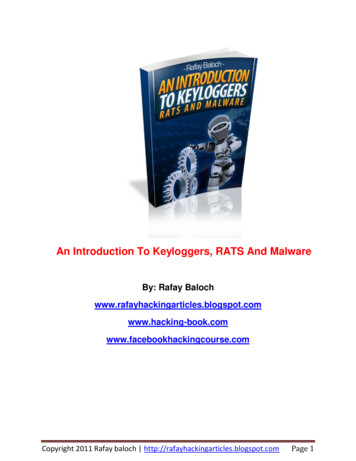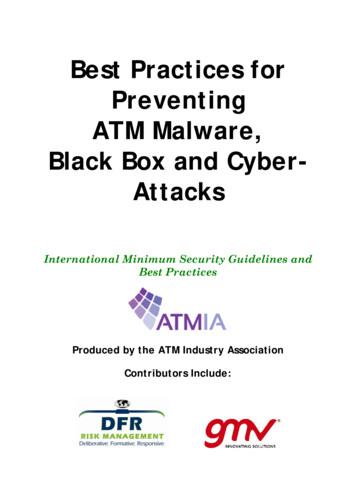
Transcription
Following Malware Execution in IDAor Ghidra1
Following Malware Execution The Ghidra decompilation view and control flow graphs arevery useful for analyzing the malware’s possible executionpaths Function calls, loops, if statements, etc. But execution can change in ways other than jumps and calls Often need to find out how the malware is executing differentareas of code2
DLLs3
DLL review Dynamic Link Library Exports functions for other executables to use Advantage: can be shared among running processes, savingmemory4
How Malware Uses DLLs By storing malicious code May export functions to other malware filesMay be loaded into another process By using Windows DLLs To interact with the operating system via Windows API functions By using third-party DLLs To interact with other non-Windows programsTo use a library that may not be on the victim’s machine5
Analyzing DLLs DLLs have many points from which code can be executed Each exported functionDllMain DllMain is called whenever a process loads or unloads the DLL Normally used for managing any resources specific to a process, butmalware sometimes uses it for other purposes6
Processes7
Process Review Process – program in execution Used to keep programs from interfering with each other Each process has a separate address space (whereas threads shareaddress space)OS manages how processes access shared resources (CPU,RAM,filesystem, hardware, etc)8
Creating a Process The CreateProcess function is typically used to create aprocess Has many parameters, gives caller a large amount of controlover how the process is created How many parameters? See here9
Running an Embedded Executable Malware contains an executable as a resource Uses FindResource, LoadResource, CreateFile, etc to writeresource to disk Uses CreateProcess to run the resource10
Creating a Remote Shell Remote shell – allows an attacker to run commands on thevictim’s computer remotely Can create a remote shell by opening a socket and using asingle call to CreateProcess!11
Creating a Remote Shell Need to pass specific arguments to CreateProcess The lpStartupInfo parameter points to a STARTUPINFO structThis struct contains handles to stdin, stdout, and stderrPoint stdin, stdout, and stderr to the socketCall CreateProcess All input from the malware actor over the socket is run on thecommand line12
Creating a Remote Shell – Sample CodePractical Malware Analysis pg 14813
Process Injection Malware can inject its own code into a different process Typically performed using the VirtualAlloc,WriteProcessMemory, and CreateRemoteThread API calls Will cover this and other covert launching techniques later14
Threads15
Thread Review Thread – sequence of instructions belonging to a process thatis executed by the CPU Each process contains one or more threads All threads share the process’s memory spaceEach thread has its own values for registers and the stack Storing and restoring these is the substance of a “context switch”16
Creating a Thread Done using the CreateThread function Takes lpStartAddress, a pointer to a functionAlso takes lpParameter, a single parameter to the functionThe thread executes the function until it returns17
Covertly Loading a Malicious Library Can use CreateThread to covertly load a malicious library intoa process Need to set certain parameters to CreateThread Pass the address of the LoadLibrary Windows API function as thelpStartAddress parameterPass the name of the desired library as lpParameter Even more stealthy if “LoadLibrary” and the name of the libraryare obfuscated – which is easy to do18
Services19
Services Review Service – a task that runs in the background without anassociated process or thread or user Managed by the Windows Service Manager20
Why Malware Uses Services Can be set to automatically run when the computer boots Gives persistence Often run with SYSTEM privileges But need admin to specify this21
Creating / Starting a Service OpenSCManager – Returns a handle to the service controlmanager, which is needed for all other service-related API calls CreateService – Adds a new service to the service controlmanager Can specify that the service automatically runs at boot StartService – Starts a service manually22
Types of Services WIN32 SHARE PROCESS – Stores code for a service in aDLL, run by svchost.exe WIN32 OWN PROCESS – Stores code in an EXE, runs as anindependent process KERNEL DRIVER – Used for loading code into the kernel23
Exceptions24
Exceptions Review Exception – allows a program to handle events outside itsnormal execution path Can be triggered by: Errors (such as a divide by 0)Hardware (such as invalid memory access)Manual call to RaiseException25
Structured Exception Handling Structured Exception Handling (SEH) – Windows mechanismfor handling exceptions List of functions for handling exceptionsEach function can handle the exception or pass it to the next handlerIf an exception makes it to the end of the list without being handled, itis considered an unhandled exception and crashes the process26
How Malware Uses Exceptions The SEH is a type of flow control that can’t be followed bydisassemblers and can fool debuggers Malware can add its own custom exception handler to the SEHand then use trigger an exception to transfer execution to thehandler27
Practical Malware Analysis pg 148. 14 Malware can inject its own code into a different process Typically performed using the VirtualAlloc, WriteProcessMemory, and CreateRemoteThread API calls Will cover this and othe
